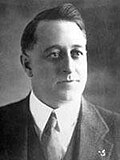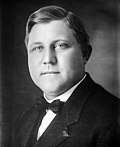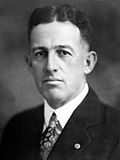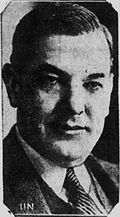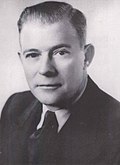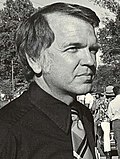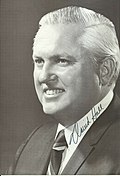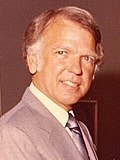Top Qs
Timeline
Chat
Perspective
List of governors of Oklahoma
List of People that were the Head of Government of Oklahoma From Wikipedia, the free encyclopedia
Remove ads
The governor of Oklahoma is the head of government of the U.S. state of Oklahoma.
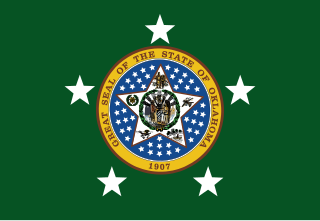
List of governors
Summarize
Perspective
Oklahoma Territory
Oklahoma Territory was organized on May 2, 1890.[1] It had seven governors appointed by the president of the United States.
State of Oklahoma
Indian Territory and Oklahoma Territory were combined and admitted to the Union as the State of Oklahoma on November 16, 1907.[21]
The Constitution of Oklahoma calls for the election of a governor every four years, to take office on the second Monday in January after the election.[22] Originally, governors could not succeed themselves, with no limit on total terms;[23] a 1966 constitutional amendment allowed them to succeed themselves once.[24] An amendment in 2010 limited them to eight years in total, retroactively applying to all living former governors.[25] Should the office become vacant because of a death, resignation or removal of the governor, the lieutenant governor immediately succeeds to the governorship.[26] After Jack C. Walton was impeached and removed in 1923, Lieutenant Governor Martin E. Trapp served in the office for the remainder of the term. He styled himself "Acting Governor," as the constitution only specified that the powers of the office devolved upon the lieutenant governor, hoping that he would not be prevented from running in the next election. However, the Oklahoma Supreme Court ruled in 1926 that, in the case of a vacancy in the office, the lieutenant governor becomes governor, and he was ineligible to run for a consecutive term.[27][28] The governor and the lieutenant governor are not formally elected on the same ticket.
Remove ads
See also
Notes
- The range given is from the date the governor was confirmed by the Senate, or appointed by the President during a Senate recess, to the date the governor's successor was confirmed, unless noted.
- Steele resigned due to frustration with the legislature. Territorial Secretary Robert Martin acted as governor until his successor arrived.[2]
- Jenkins was removed due to a corruption scandal, though he was later exonerated. Territorial Secretary William C. Grimes acted as governor until his successor arrived.[14]
- Lieutenant governors represented the same party as their governor unless noted.
- Walton was convicted on multiple charges of corruption, abuse of power, and for violating the state constitution by suspending habeas corpus.[43][46]
- Edmondson resigned so that his successor would appoint him to a vacant United States Senate seat.[78]
- Represented the Democratic Party
- Boren resigned, having been elected to the United States Senate.[96]
- Represented the Republican Party
- Stitt's second term began on January 9, 2023,[111] and will expire on January 11, 2027; he will be term-limited.
Remove ads
References
External links
Wikiwand - on
Seamless Wikipedia browsing. On steroids.
Remove ads












